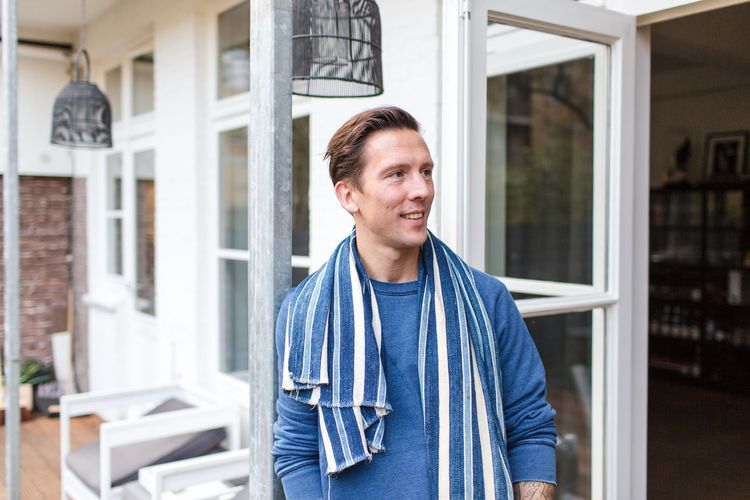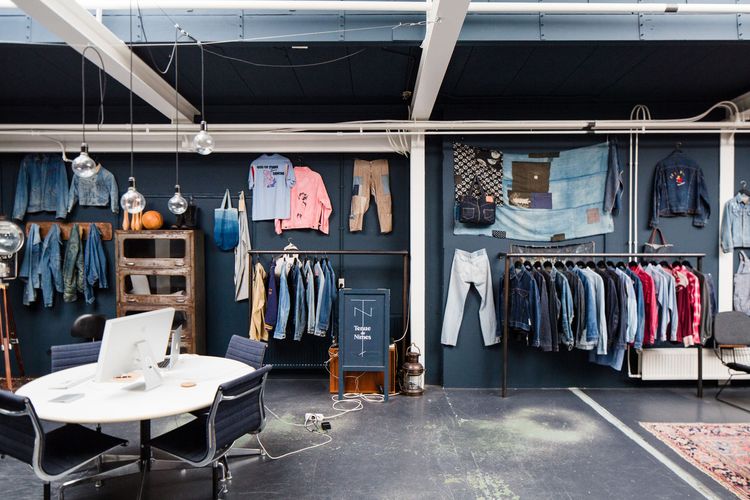ProductsChairsLounge chairsSofasOffice chairsChaises longuesStools & benchesSculpturesConference chairsAirport seatingStorage spaceMicro architectureDining tablesCafé tablesCoffee & side tablesDesksOffice furniture systemsConference systemsLightingClocksDecorative objectsCoat racks & wall shelvesTrays & vesselsNewBestsellerQuickshipColour & materialAlexander Girard Antonio CitterioBarber OsgerbyCharles & Ray Eames George NelsonHella JongeriusIsamu NoguchiLounge chair finderOffice chair finderGift finderCare & repairSpare partsCare productsManufacturer warrantyVitra Circle StoresMynt: sit differentlyAntony Limited Edition 2025InspirationsLiving roomDining roomHome OfficeChildren's roomOutdoorHome StoriesAugmented RealityColours & materialsHome SelectionWorkspaceFocusMeetingWorkshopClub OfficeCitizen OfficeStudio OfficeDynamic SpacesHospitalityAirportsEducationCo-WorkingHealthcareOur ClientsDestination WorkplaceA case for classicsOffice chairsDancing OfficeHome StoriesThe Home Selection fabrics from Kvadrat and DedarAugmented Reality - bring Vitra products into your homeSchool of Design: Showcase work and knowledgeA case for classicsColour & materialAn open house An office landscape - without walls or partitionsHigh comfort of low energyA leading space for a leading art collegeServicesCare & repairCare productsManufacturer warrantyFAQ and contactInstructionsConsulting & Planning StudioVitra Circle StoresConsulting & planning in the VitraHausInstructionsOutdoor care instructionsRepair, maintenance, overhaul at the Vitra Circle Store Campus ProfessionalsCAD dataProduct factsheetsCertificatesSustainability reportInstructionsEcology informationpConPlanning examplesColour & Material LibraryCertificates and standardsHome SelectionTo the dealer loginOur ClientsMyntDestination Workplace: Visit our clients and partnersAnagram SofaMikadoTyde 2 on castorsACXDancing OfficeOffice chairsMagazineStoriesConversationsExhibitionsDesignerProject VitraA Capsule in TimeSeeing the forest for the treesRefining a classicMynt is a lifetime achievement to meA desk like a typefaceV-FoamSculptural IconsGames bring people together – just like good officesLet there be light!Social SeatingJust Do It!EVER GREENWhy the Eames La Fonda Chair was designedWhen a Sofa is more than just a Sofa: Anagram100% virgin wool – 100% recyclableAn archive is like a time capsuleVitraHaus Loft - A conversation with Sabine MarcelisA 1000 m2 piece of furnitureFrom a toy to an objectThe Eames Collection at the Vitra Design MuseumAbout the partnership between Eames and VitraVitra CampusExhibitionsGuided tours & workshopsFood and drinkShoppingActivities for familiesArchitectureYour eventConsulting & planning in the VitraHausPlan your visitVitra Campus appCampus EventsNewsVitraHausVitra Design MuseumVitra SchaudepotVitra Circle Store CampusOudolf GartenAbout VitraSustainabilityJobs & CareersDesign processThe Original is by VitraHistory - Project Vitra
The Test of Time
Interview with Menno van Meurs

Time - there doesn’t seem to be enough of it these days and some even consider it to be the ultimate luxury. Yet time is what drives Menno van Meurs, co-founder of Amsterdam-based denim brand Tenue de Nîmes. From jeans to vintage Eames chairs, slow drip coffee to suede Red Wing boots, Menno embraces “the good things in life.” It’s not a coincidence that all of these are crafted to last, to stand the test of time. In Tenue de Nîmes’ studio space in the west of Amsterdam and Menno’s family home, it’s almost as though time stands still. Treasures have been gathered from all corners of the globe. From Tokyo, Japan to Saint Paul, Minnesota, each object has its own story to tell. Amongst the crafted chaos, a timeless harmony rings true that can only be identified as Tenue de Nîmes.
When did you know you wanted to work in retail?
I was 15 years old. I thought working in retail was one of the coolest things you could do. I was obsessed with sports at the time, and used to take the train to this one sports shop in Rotterdam almost every weekend; I was there so often that the manager eventually offered me a job. I guess you could say I was hooked from then on. At 17, I started working at a jeans store, which opened my eyes to the incredible world of denim. When I finished my studies I knew I wanted to get back into retail.Was that what inspired you to open your own store?
After doing an internship at creative agency …,staat (where I met our art director Joachim Baan), I ran into Rene Strolenberg, an old friend of mine from back when I used to work at a jeans shop. We remembered a dream we once had to change the world – that’s what you do when you’re 17, right? I shared my thoughts about opening my own store, and Rene, who was working at G-Star at the time, jumped on board.Tell us about Tenue de Nîmes.
We celebrate the good things in life. We want to show people that there are so many beautiful things that actually stand the test of time. I always think of that Patek Philippe slogan: “You never actually own a Patek Philippe, you merely look after it for the next generation.” When you look at the origins of jeans, why jeans were made in the first place, it’s quite incredible; they weren’t made to be beautiful, they were functional and made to last. Jeans were supposed to facilitate lives, to ensure that people performed better. The story of our store will always be related to jeans – it has progressed quite organically from a purist jeans store to a warehouse of beautiful products, brands and concepts.What would you say is the reason for your success?
We’ve tried to find a good mix between old-school retail and the new world. Old-school retail is about knowing your product, providing good service and believing in the products you sell. Our society has forgotten that. People say that we go out of our way for our customers, but we just think we’re providing good service. Then on the other hand, we live in strange times. We no longer communicate with people who live in Amsterdam alone, but with the whole world – that’s an exciting development for the retail industry. That combination between old-school retail and the Internet-driven new world is essential.

You have quite a great collection of objects here in the studio, from Japanese dolls and stuffed foxes to 1950s collector’s item denim jackets and vintage Eames chairs. Can you tell us about them?
This is an early example of an Eames Plastic Armchair DAX. It’s often called a Rope Edge after the rope embedded in the edges. When I found it, it was in a really bad condition; it had four holes along the back (you can’t see them anymore because a good friend of ours repaired it). Apparently most people used these chairs outdoors so the holes made sure rainwater would seep out. It’s crazy to think of someone doing something like that today (laughs). We picked up the Plastic Armchair and this other one (points to a vintage Plywood Group DCW chair) at a vintage shop outside Saint Paul, Minnesota for just a couple hundred bucks. I guess you could say the soul of Tenue de Nîmes is bound to objects like these. The fact that we place the many treasures we find in our studio and our stores ensures that there’s always an interesting story to tell.There’s definitely a similar aesthetic between the stores, studio and your home. Would you agree?
It’s not something I planned. Everything you see comes from the heart. What you see in my home is a strange collection of things I find fascinating. And you could say it mirrors my interests – from American vintage and the heritage of jeans to contemporary art and sleek Scandinavian design. I don’t have much time, I work very hard and spend as much time as I can with my family, so it’s important to surround myself with objects that bring me joy.You have quite an extensive collection of Eames furniture. Is there anything in particular that draws you to it?
What I admire most about the work of Charles and Ray Eames is the timelessness of their work. Today, the Eames chair is considered an icon – Times Magazine even named the LCW as the most important design of the 20th century – but it wasn’t made to be that. They were destined for the average person, for just about everyone actually, and they were made to last. You could find them everywhere: from schools and airports to hospitals and government buildings. This set of white Eames Plastic Armchairs are originally from a hospital in the US. This design wasn’t very popular at the time and the only reason they’re still so white today is because people were forbidden to smoke in hospitals!"I want to make people think about the most scarce thing we have in life: time."
Are there any other items you want to tell us about?
This is quite a unique piece too. (Menno points to the Leg Splint propped up on the mantelpiece). Eames created about 150,000 of these for the American army during World War II. One of his biggest frustrations was that he couldn’t find a way to bend plywood the way he wanted to create the ideal chair. Thanks to this splint, he finally mastered the technique of curvature, and created the renowned LCW chair. I was so inspired by this story that I decided to buy one for myself and create an ‘altar’ of sorts.What do you mean by altar?
I saved up to buy this LCW chair; it dates back to the 1940s and it’s actually from the first series. Above it, I’ve hung an old press photo of Muhammad Ali. Every morning I’m reminded of these two great people, Charles Eames and Muhammad Ali, two men who never gave up. I think it’s important to reflect from time to time. It’s unfortunate that we don’t stop and think about all we have done more often, especially when time has become so precious.

I feel like we keep touching on this aspect of time.
Ralph Lauren once said that things made for a specific function must get better with age. I believe you should invest in things that last because that way, you can enjoy them your whole life. That’s definitely true of furniture – a brand new leather sofa is nowhere as beautiful as a 20-year-old one. Think of the work of Charles and Ray Eames – they designed simple products that were meant to last, not only in their function but in their aesthetic too. The same can be said of clothing. Everyone is so concerned with fast fashion that we decided to go slower and slower. Haider Ackermann said that he makes clothes to help people lose all sense of time. Time, he said, is the ultimate luxury. When I heard that I thought, that’s genius. I want to make people think about the most scarce thing we have in life: time.Mehr von diesem Portrait bei Freunde von Freunden.
Publication Date: 8.2.2016
Author: Margot van der Krogt
Images: Jordi Huisman



